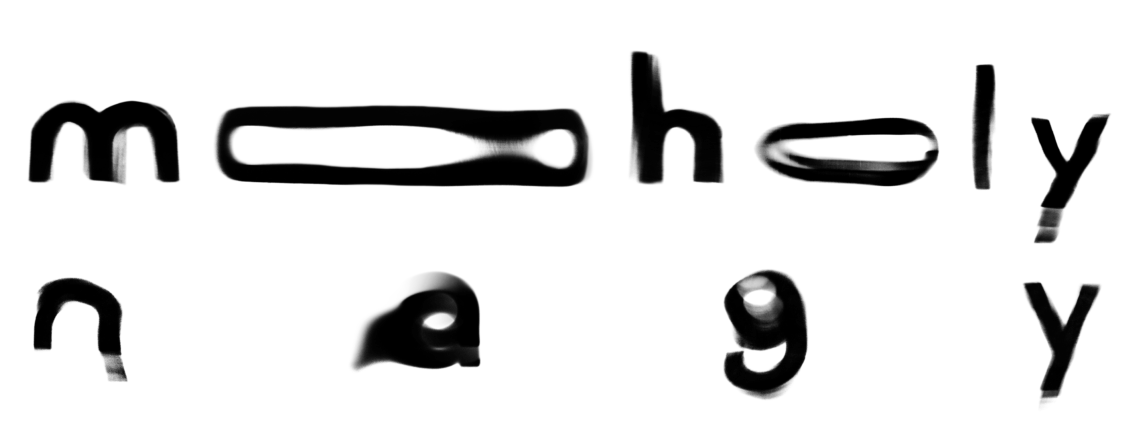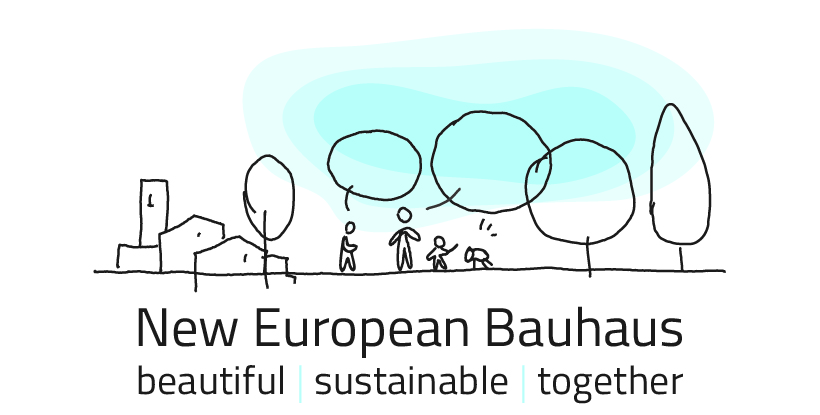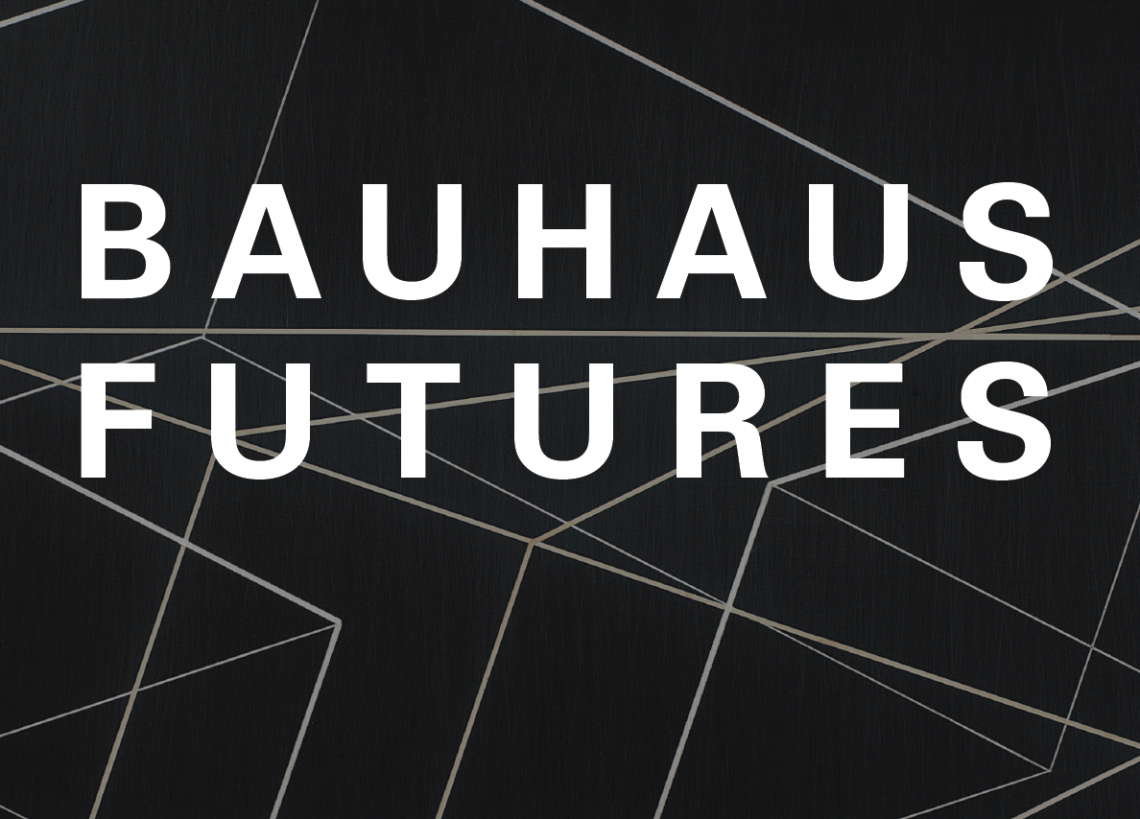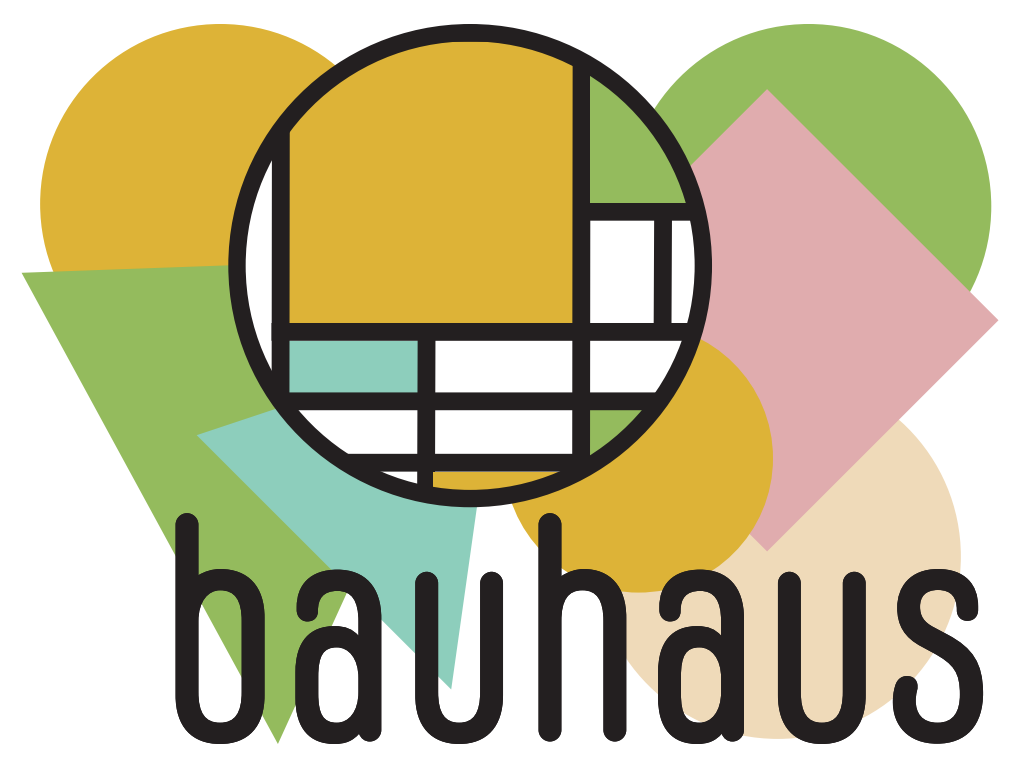Andreas Hug, Board of Directors, Moholy-Nagy Foundation
January 6, 2022

Dezeen has named the Moholy-Nagy Foundation’s redesign by Pentagram as one of its “top 10 rebrands of 2021.” The following was excerpted from a conversation earlier this year between Moholy’s grandson, ID alum Andreas Hug (MDes 2004), and Kristin Gecan.
Kristin Gecan: How does Moholy’s work come through in the new identity?
Andreas Hug: You know it’s interesting because, in his period at the Bauhaus and then also in Berlin, Moholy really picked up an interest in the medium of light, how could light be used, to convey drama or some type of meaning, especially in his experiments and his films. I’m thinking Black White Grey.
When we look at pieces like that, and the implied movement within the [new] logo, I think it becomes very clear that there is a symbiotic relationship there, that one derives from the other, that there is this give and take if you will.
What I think Marina [Willer] and Pentagram created is not just derivative—she adds a new, modern element to it, and I think the distortion element is that new element. It’s really interesting because my mom [Hattula Moholy-Nagy] first thought it seemed like a distortion.
And it certainly was and it’s certainly a departure, but I think it’s a very smart departure in the sense that it takes the ‘Moholy,’ literally his name, and the medium of photography but it casts it through a new filter and I think that that filter, if you will, I think, is the modern element to it and the involvement that might have been had he lived.
What we’re hoping for, to be quite honest, is that new generations rediscover him.
Kristin: How do we make someone that has been dead for a number of years now relevant to the current moment?
Andreas: So I think in one way, I think that Moholy is still extremely relevant in the pedagogical realm. It still very much resonates at ID, but I think it also has populated within different realms in different professions. I mean when I think of, for example, customer strategy or customer experience design, or I think of UX, or other areas—I think we take what he was thinking of totally for granted. That is really putting the user first, being very user centric.
That’s something that I think Moholy was very much aware of in the beginning. I mean I think that’s really part of the Bauhaus ethos.
That is a testament to not just Moholy, but the general pedagogical outlook of the Bauhaus.
Kristin: From my perspective he is incredibly relevant today. What’s top of mind for me right now is a quote of his that I can’t recall verbatim, something along the lines of, “The modern person will need to be fluent in the art of photography.”
Andreas: Yes.
Kristin: And now we have Instagram.
Andreas: Absolutely, absolutely. I think at the very base you’re absolutely right, I mean everybody has a camera now. And that wasn’t a given in the 1920s clearly so I think that he definitely anticipated that. I think there’s also another part of that, where I think you know the person who is unfamiliar with photography will be the ignorant one.
There’s that element that technology will serve it or become more commonplace. He missed, unfortunately, the advent of the personal computer, but I think it would have been a really phenomenal tool for him.
Kristin: Can you imagine him with AI?
Andreas: I don’t think we’d ever see him. I think he would just put on, you know, VR and he would just disappear into a dark room.
When I play with something like an Oculus, I can just imagine what he would have done—I mean, he would have loved it.
Kristin: Right.
Andreas: You know I think that that would have set the stage for a whole nother adventure, a whole nother chapter, if he had lived.
Kristin: So as you know Moholy founded ID and he was way ahead of his time in so many respects. And then the school has reinvented itself over the years. It was for quite some time focused on photography. Today we have no photography program.
I wonder what you think is next? What does ID, or design, look like in five years, what is on the horizon? A lot of that is in the works for us right now. At ID we talk about building intelligent futures, or building cooperative, responsible, intelligent futures, and how we need to really harness the creative capacity of all the people in the world in order to build those futures.
And so oftentimes I think of this in terms of design is not just being for designers. Having the capacities that design affords you can and bringing those capacities to people in general—not just graduate students, but the public in general—bringing those skillsets and ways of thinking would really be key to overcoming these great hurdles that we have.
From my experience, and I’m not a Moholy expert, but from my experience in reading about him he was all about bringing as many people from as many different backgrounds together to to learn, experiment, etc. What are your thoughts about what he might see for the role of design today?
Andreas: The first thing that really pops in my mind is how we work today. The clearest way to look at that is you know the working methodology of Waterfall versus Agile, right? Actually working within a multidisciplinary team environment, working interactively, working collaboratively, in unison—working fast. Quickly ideating, making a lot of mistakes. When you look at those two different means, Waterfall versus Agile, I think it overlays really beautifully in terms of you know what I think countries and individuals and organizations need to also do.
If we’re going to tackle this ridiculous pandemic, it’s going to take massive organizations and agencies working in concert, in a collaborative environment. I’m even seeing it in different industries. For example, my wife is at the Medical School at University of Michigan. She works in the grants office, she is a program manager so she works in concert with these very, very, very busy researchers and doctors.
And they work collaboratively to resolve elements of not just bringing students in but actually getting work done and getting money so they can continue to do the work. I think in the very base level, and I hope this isn’t too simple of a metaphor, but I believe that it’s really about collaboration, I think we’re going to have to as a society, I think open ourselves to that opportunity of exchanging knowledge and ideas from subject matter experts, you know I think we have so many different divergent subject matter experts.
Especially when it comes to resolving something like a pandemic, right? Everything from logistics to the medical doctors to the chemists to manufacturing.
Kristin: Sometimes this all seems like so simple like, is it really all about being collaborative?
But at the same time let’s step back. It sounds so simple, but collaboration is anything but simple, right?
Andreas: That’s exactly right.
Kristin: As we can see it’s so difficult for people to work together.
Andreas: This mashing up of disciplines and creating something entirely new and not following the standard formulaic curriculum models that everybody else produces—that’s what attracted me to ID, I mean when I arrived in Chicago in 1995. I was thinking, I really need to get a master’s degree. I applied to a couple of other schools, I didn’t think about the Institute of Design, it wasn’t on my radar.
And so I got a full ride to get a Master’s of Fine Art, basically a graphic design degree. My first semester I realized that I was going to be basically obsessing about finances for the rest of my life. And that seemed like a waste of time to me. But anyway to make a long story short, I left it all, I applied to the Institute of Design. I got in. I paid for it.
But it was the best decision I made because I was actually learning, things that now everybody’s doing, but back then, were new. So I mean I think that’s where it again really excels you know it’s breaking that norm, it’s that mashup of different disciplines and giving people an opportunity. And even to some degree inventing new disciplines.
Back then, it was human-centered design. Now we have a completely different nomenclature for all of this. It’s a continual evolvement and I think that’s where again ID just excels.
And you guys always get these interesting leaders, you know. I mean, going from Patrick Whitney to Denis to others.


